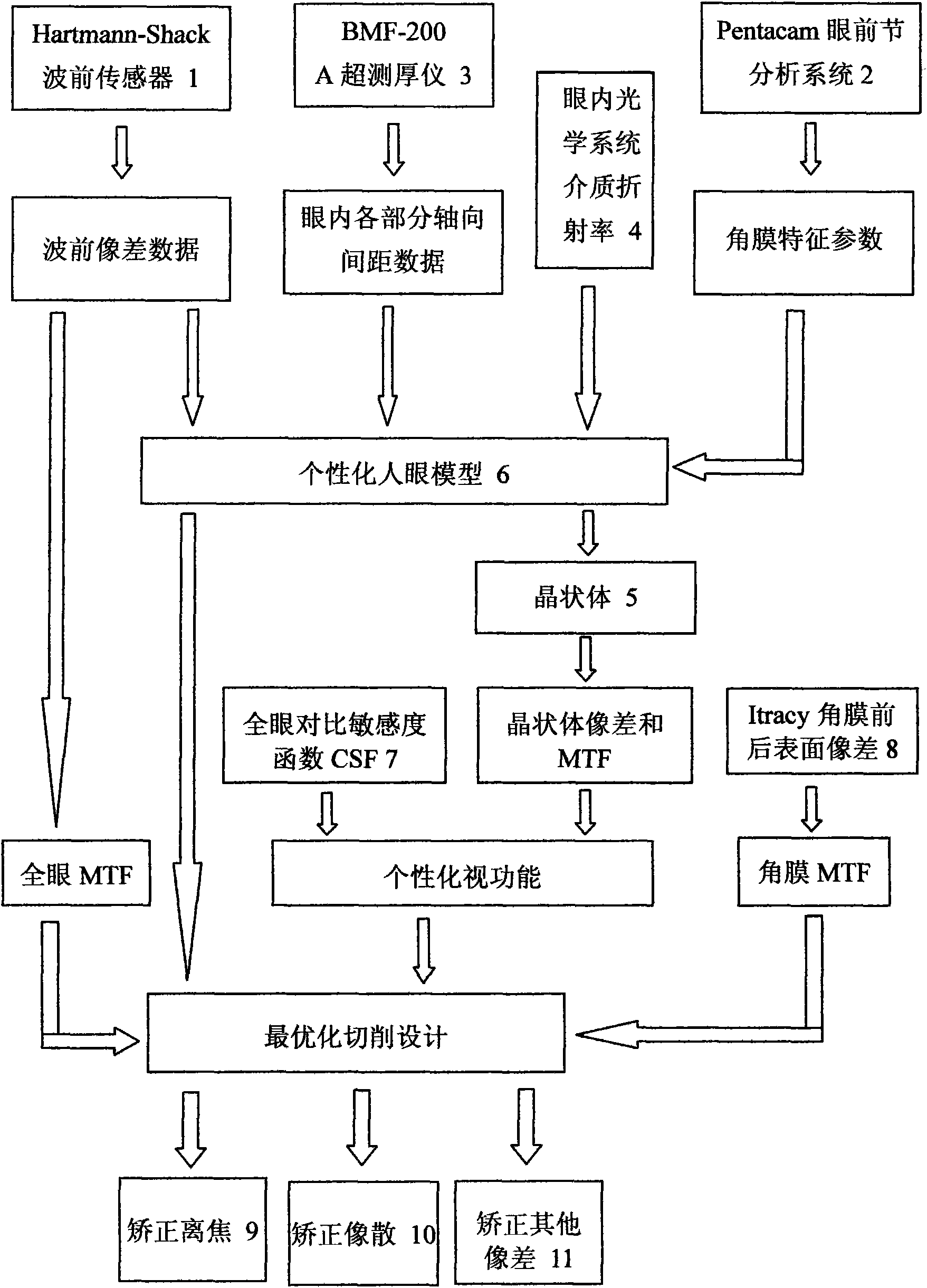MTF based optimization design for customized human eye correction model
A human eye model and optimized design technology, applied in the field of vision correction, can solve the problems of not considering the wavefront aberration data of individual human eyes, not really reflecting the visual quality, and the aberration data not truly reflecting the optical quality of the human eye
- Summary
- Abstract
- Description
- Claims
- Application Information
AI Technical Summary
Problems solved by technology
Method used
Image
Examples
Embodiment Construction
[0020] specific implementation
[0021] As shown in Figure 1, the Hartmann-Shack wavefront sensor [1] is used to measure the wavefront aberration of the human eye, and the aberration data of the individual human eye is added to the optimization function of the optical design software Zemax to define the wavefront aberration of the human eye. The actual aberrations of the eye. In addition, the whole-eye MTF can also be calculated from this wave aberration.
[0022] The Pentacam anterior segment analysis system [2] is used to measure the corneal curvature and the height of the front and rear surfaces of the cornea relative to the reference sphere. The height difference of the corneal surface along the sagittal direction was transformed into the height difference along the vertical direction, and the aspheric surface of the cornea was fitted by a high-order aspheric function.
[0023] A-type ultrasonic thickness gauge [3] is used to measure the distance between various parts of...
PUM
 Login to View More
Login to View More Abstract
Description
Claims
Application Information
 Login to View More
Login to View More - R&D
- Intellectual Property
- Life Sciences
- Materials
- Tech Scout
- Unparalleled Data Quality
- Higher Quality Content
- 60% Fewer Hallucinations
Browse by: Latest US Patents, China's latest patents, Technical Efficacy Thesaurus, Application Domain, Technology Topic, Popular Technical Reports.
© 2025 PatSnap. All rights reserved.Legal|Privacy policy|Modern Slavery Act Transparency Statement|Sitemap|About US| Contact US: help@patsnap.com

